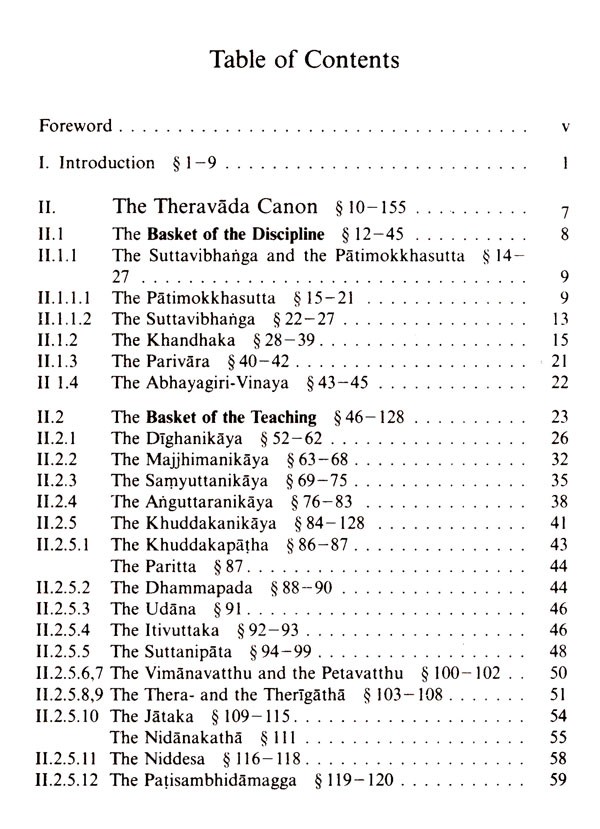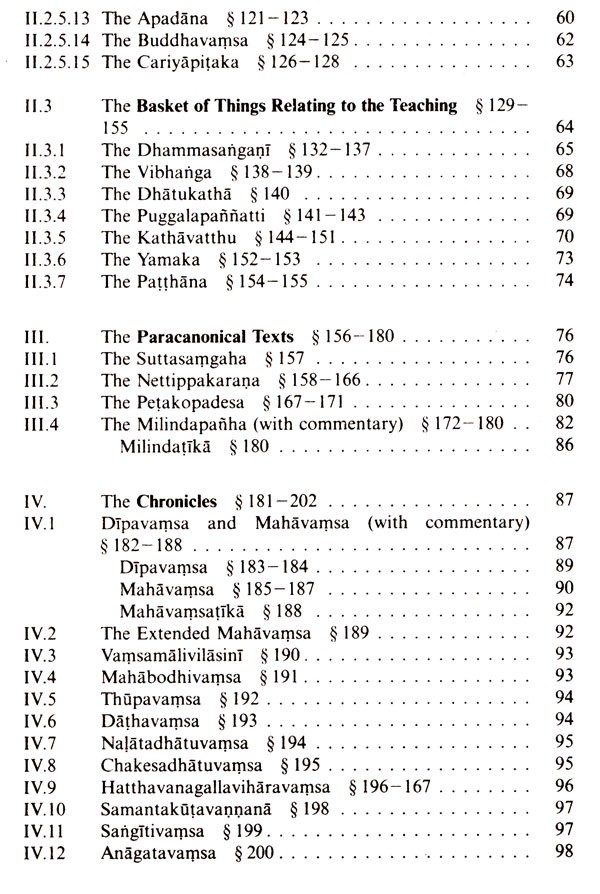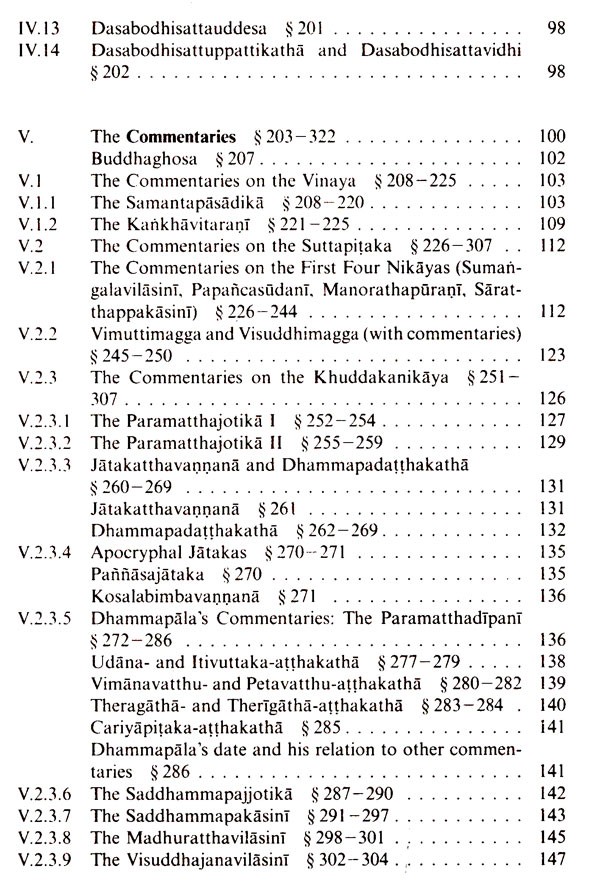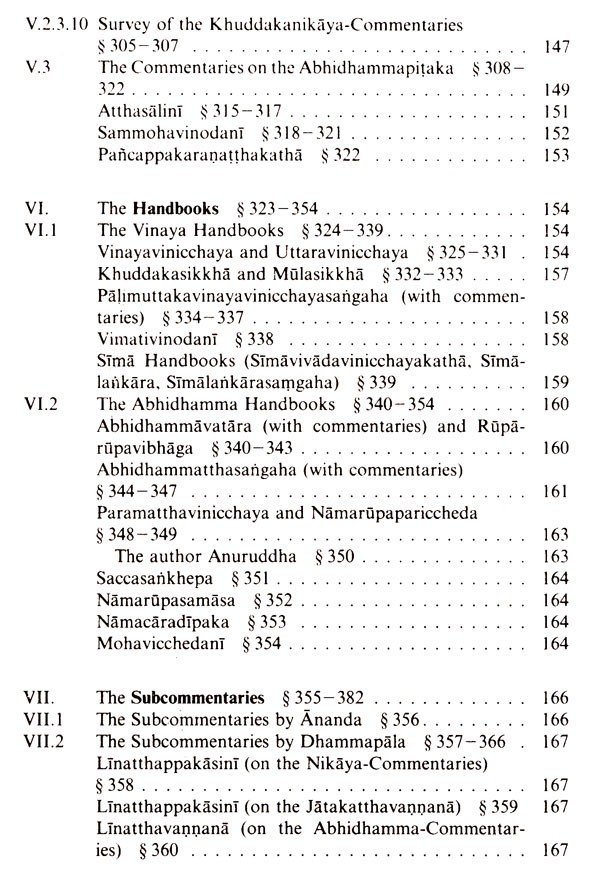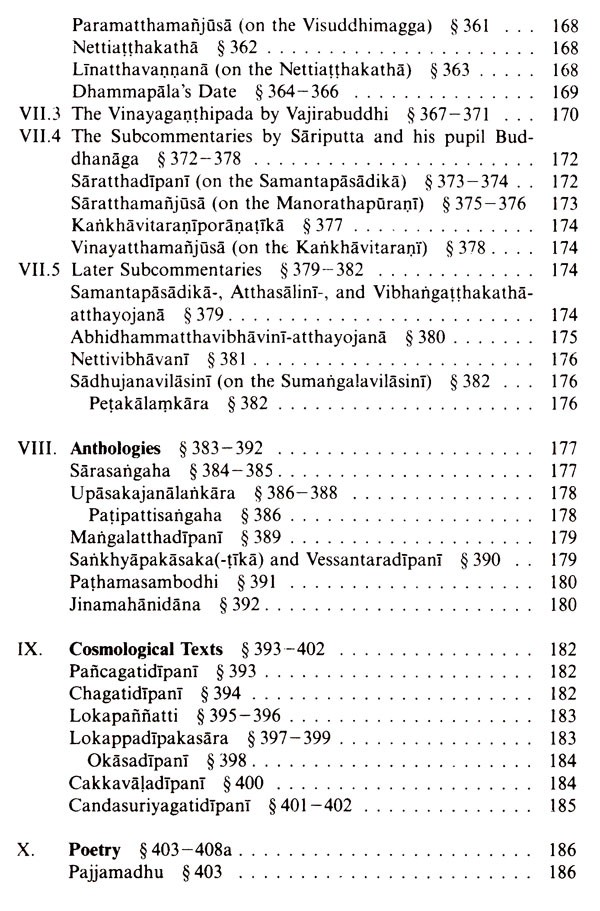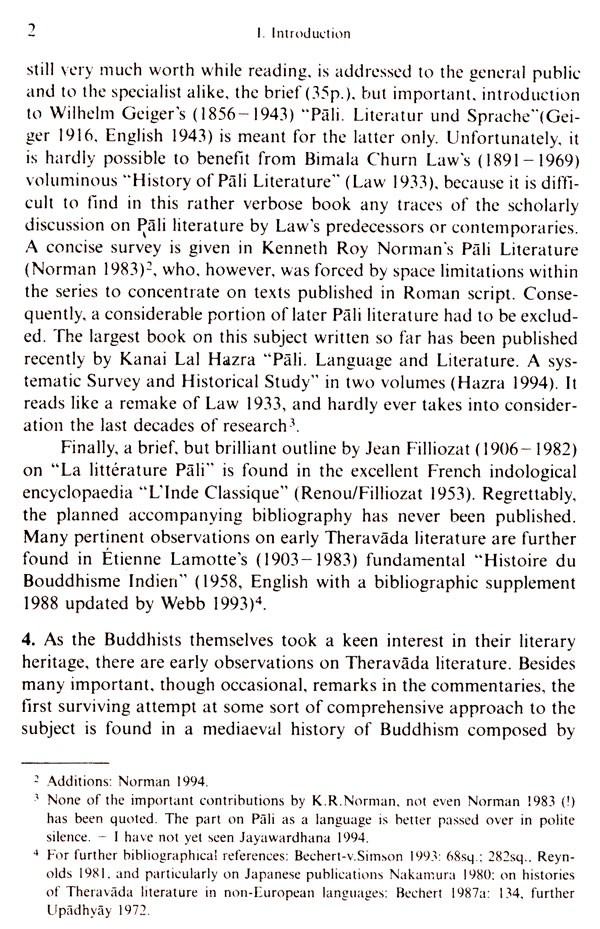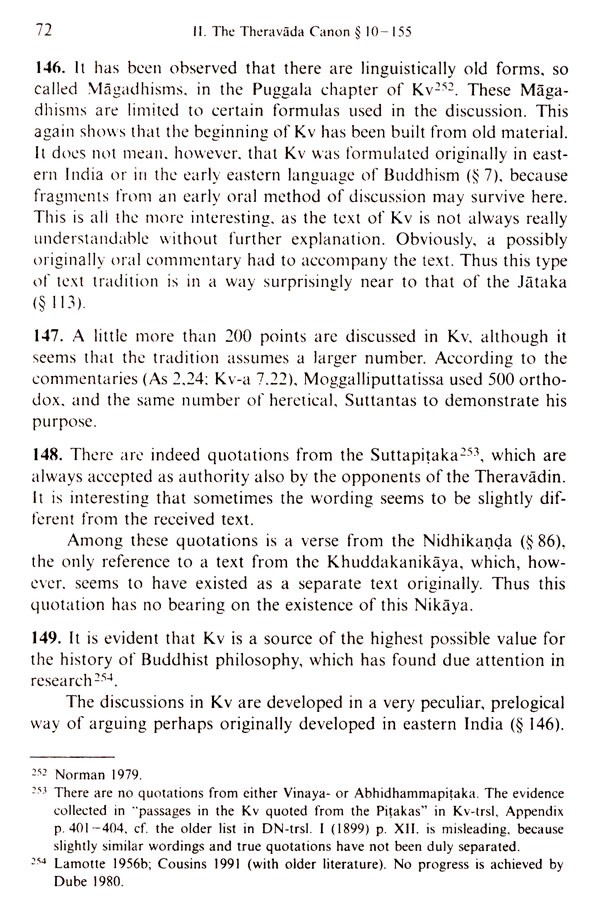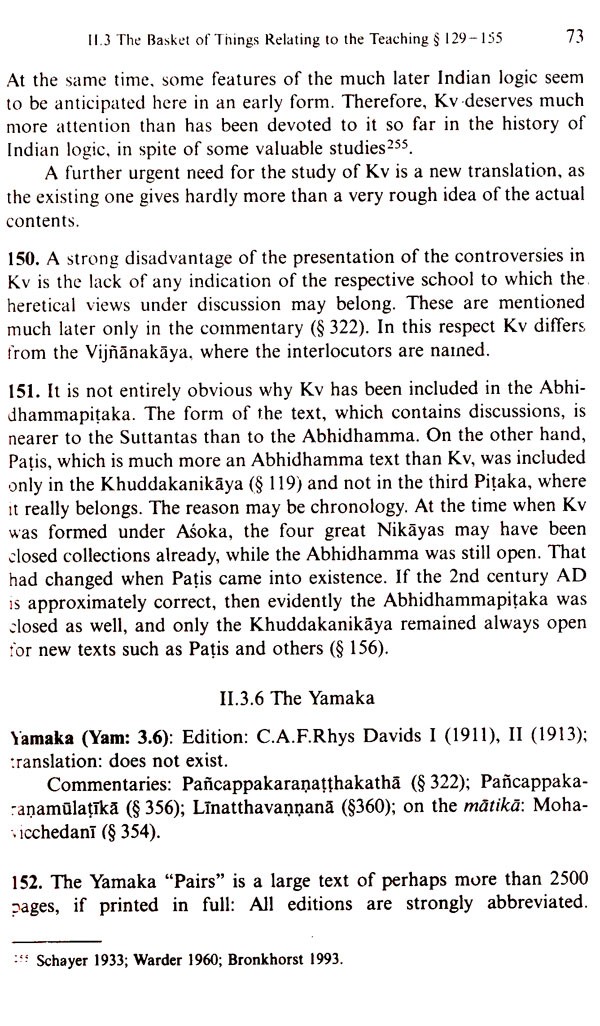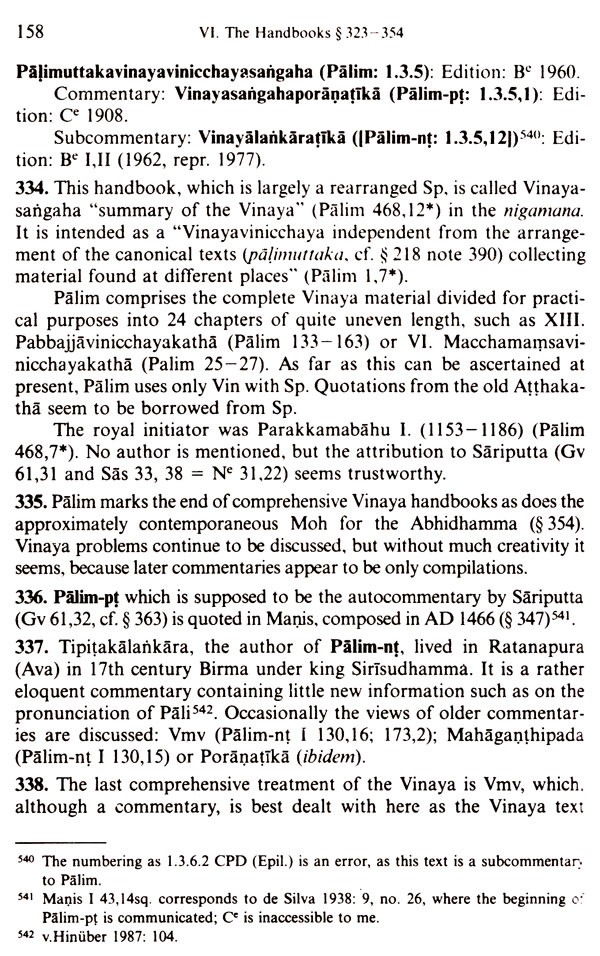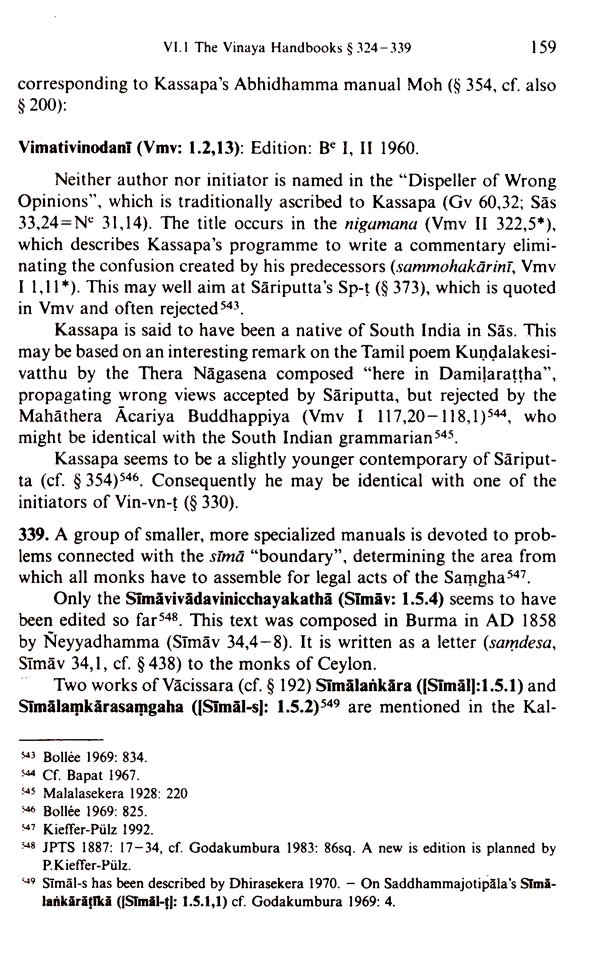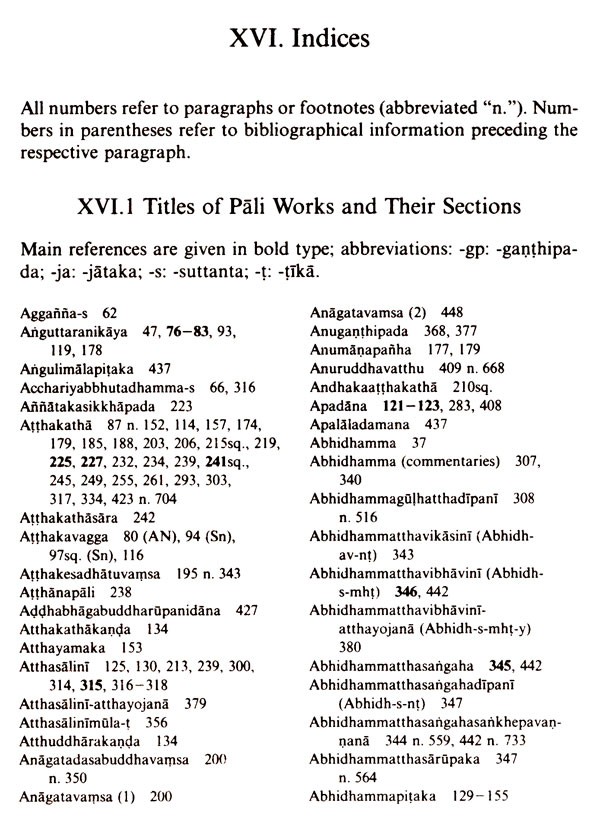
A Handbook of Pali Literature
Book Specification
| Item Code: | AZB549 |
| Author: | Oskar Von Hinuber |
| Publisher: | MUNSHIRAM MANOHARLAL PUBLISHERS PVT LTD |
| Language: | English |
| Edition: | 2015 |
| ISBN: | 9788121507783 |
| Pages: | 276 |
| Cover: | HARDCOVER |
| Other Details | 8.80 x 5.80 inches |
| Weight | 440 gm |
Book Description
The Handbook deals with the whole of the literature in Pāli, the liturgical language of Theravāda Buddhism, which is still alive in Ceylon and South-East Asia. In addition to reviewing the canonical texts (Tipitaka), which form the oldest body of extant Buddhist literature, and their commentaries, the Handbook presents the later Pāli literature, written after the 12th century, much of which is only available in Oriental prints. The account not only summarises the findings of earlier research, but extends the scope of a handbook by demonstrating new methodological approaches to the canonical literature, for example by showing how the strict formal structure of the Sutra texts is determined in part by their oral transmission. Questions of the authorship of the commentaries on the canon (post-5th century AD) are revisited and the chronology of the texts critically examined. By comparing parallel commentaries, insights are gained into the structure of this comprehensive yet unexplored are of Pāli literature. Access to the Handbook is provided by a number of indexes.
The original inspiration for this book goes back to early 1991, when Charles Hallisey invited me while staying in Chicago to write a long chapter on Pāli literature for his planned “Handbook of Theravāda Literature”. When that plan did not materialize, I decided to publish the section on Pāli literature separately.
This original plan has left its mark on both the structure and the length of the present book. As far as possible, I have attempted to remain within the space limits proposed for the projected handbook, despite the fact that it soon became clear that it would be impossible to deal exhaustively with Pāli literature within those limits. As a result, my presentation is at times extremely brief. Even after deciding to publish the study separately, I persisted with this brevity in order to avoid stylistic inconsistency.
My contribution to the planned handbook was to cover the whole of Pāli literature, with the exception of titles listed by H. Smith in the Epilegomena to the Critical Pāli Dictionary under 2.9.22 “Medicine", 2.9.23 “Law”, and 5. “Philology”. These were to be dealt with by J. Liyanaratne, A. Huxley, and O. Pind respectively. Consequently, they are not treated in the present survey.
Despite the limitations of space, I have attempted to deal with as many titles as possible, in order to give a survey of Pāli literature as comprehensive as possible, excluding the group of texts mentioned above. Some of the titles presented in the chapters on later Pāli literature have not been previously noted in modern Western studies. Although it has proved impossible to include all known Pāli texts especially those extant only in manuscript form, the present handbook supplements the Epilegornena to the Critical Pāli Dictionary.
The selection of later Pāli texts is necessarily somewhat unsystematic, having been dictated by arbitrary circumstances such as the accessibility of printed editions, or of information on the contents of manuscripts. I generally decided to include new or hardly known titles, rather than exclude them only to follow excessively rigid guidelines. At any rate up to the subcommentaries written in the 12th century all Pāli texts were included.
The sequence of treatment of titles is largely based on that of the Epilegomena, which itself mostly follows a traditional Theravāda classification. References to editions and translations already listed in the Epilegomena are given in abbreviated form, while references to new ones, i. e. those appearing only after 1948, the date of the Epilegomena, are given in full. This bibliographical information precedes the treatment of the respective Pāli texts and is not repeated in the bibliography.
The preparation of this handbook began four years ago, when I gave a series of lectures on Pāli literature at the University of Freiburg im Breisgau during four terms (“Wintersemester” 1992/3 to “Sommersemester” 1994). For this survey the lengthy manuscript that resulted from these lectures has been abbreviated to approximately one third of its original length. I hope to prepare a much fuller history of Pāli literature in future.
The present handbook has benefitted considerably from being read by Th.Oberlies, Freiburg, H. Bechert, Göttingen, and his pupils U. Hüsken and P. Kieffer-Pülz, especially the latter, who checked the manuscript meticulously and made a number of valuable suggestions.
The English was corrected by José Cabezón, University of Denver, Colorado (§ 1-198) during his stay in Hamburg, and by Paul Skandera (8 199–225) and Birgit Felleisen (§ 226-450), pupils of one of my colleagues at Freiburg, Christian Mair. Peter Skilling, Bangkok, provided me with references and books from Thailand otherwise inaccessible or difficult to find, and S. Hori, Freiburg, translated Japanese material for me. My sincerest thanks are due to all of them for their ready and invaluable help.
Lastly, I am deeply obliged to my friends A. Wezler, Hamburg, and M. Witzel, Harvard University, for accepting the manuscript as part of the new series “Indian Philology and South Asian Studies”.
**Contents and Sample Pages**
